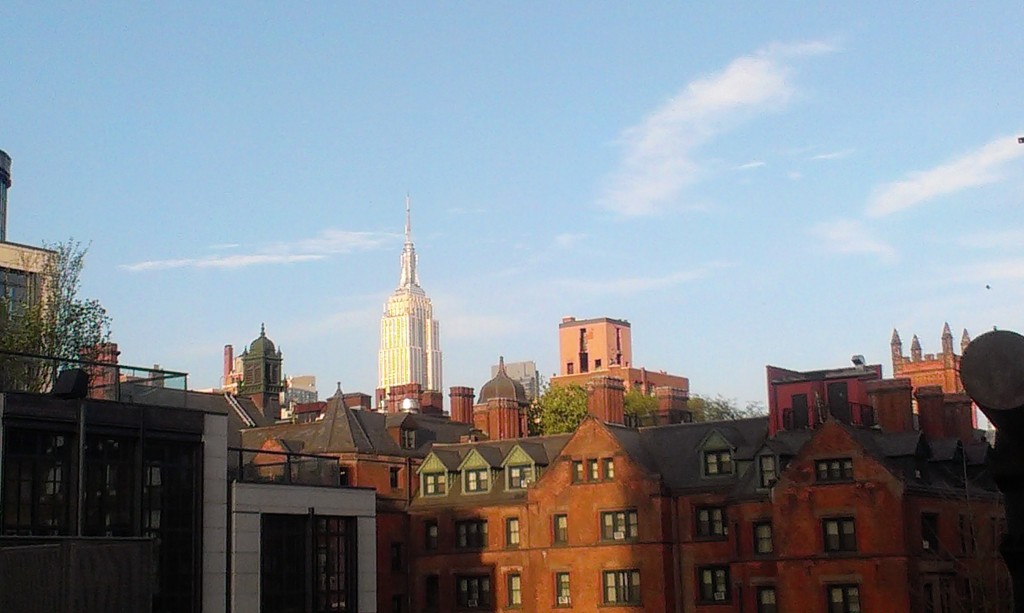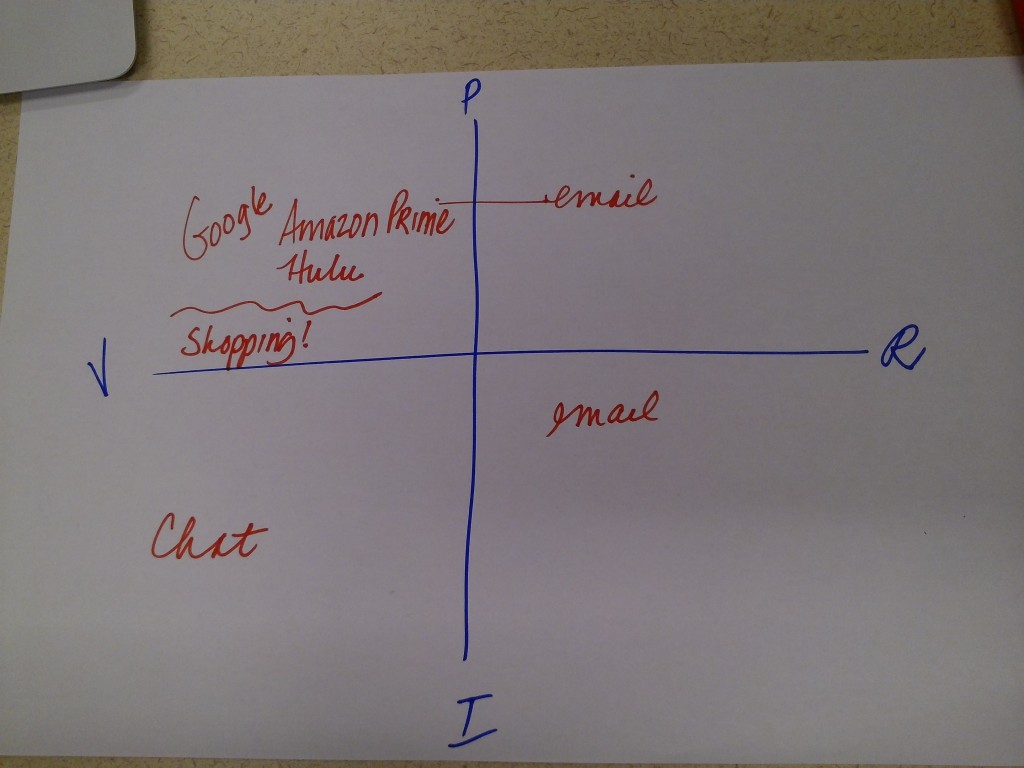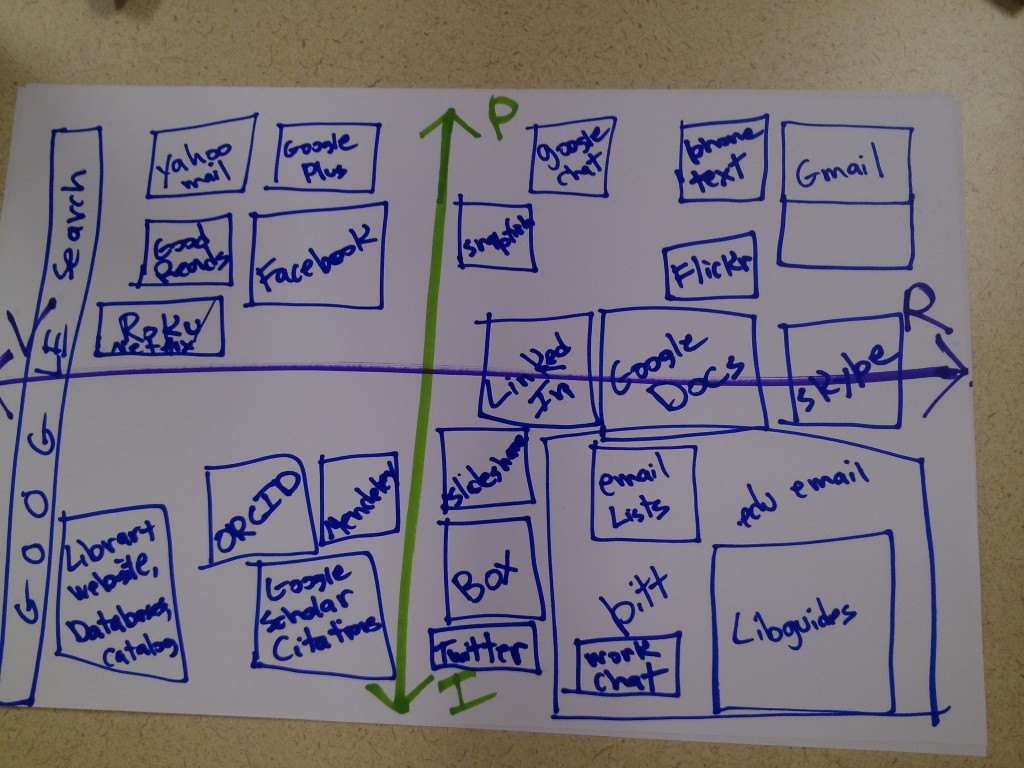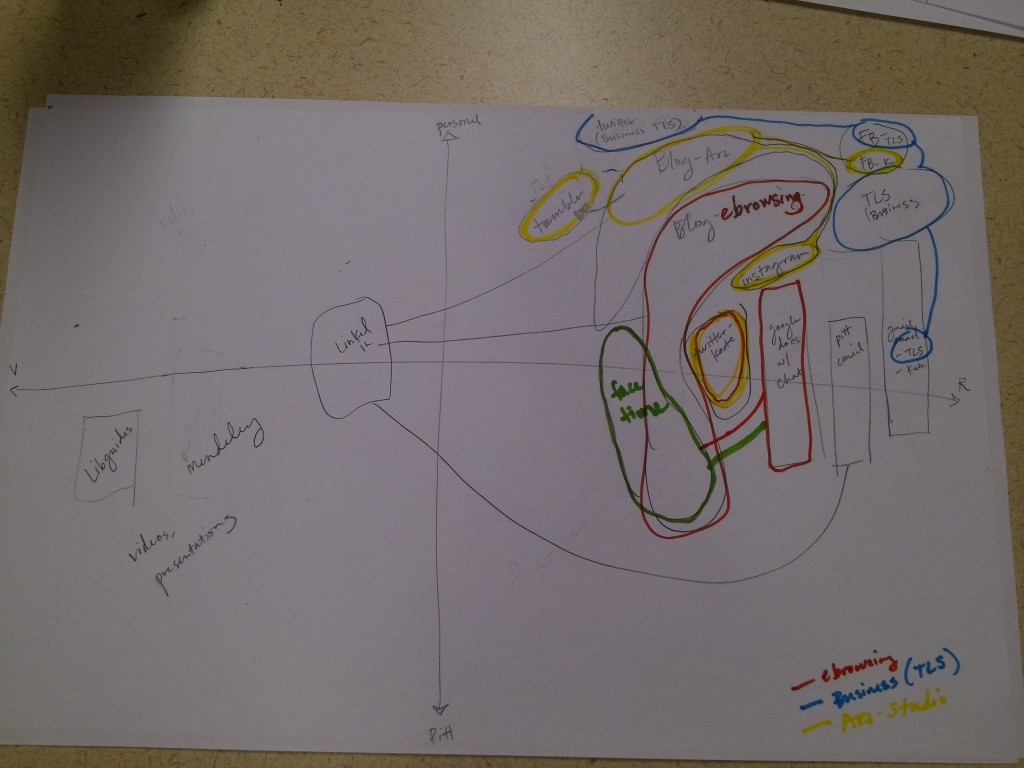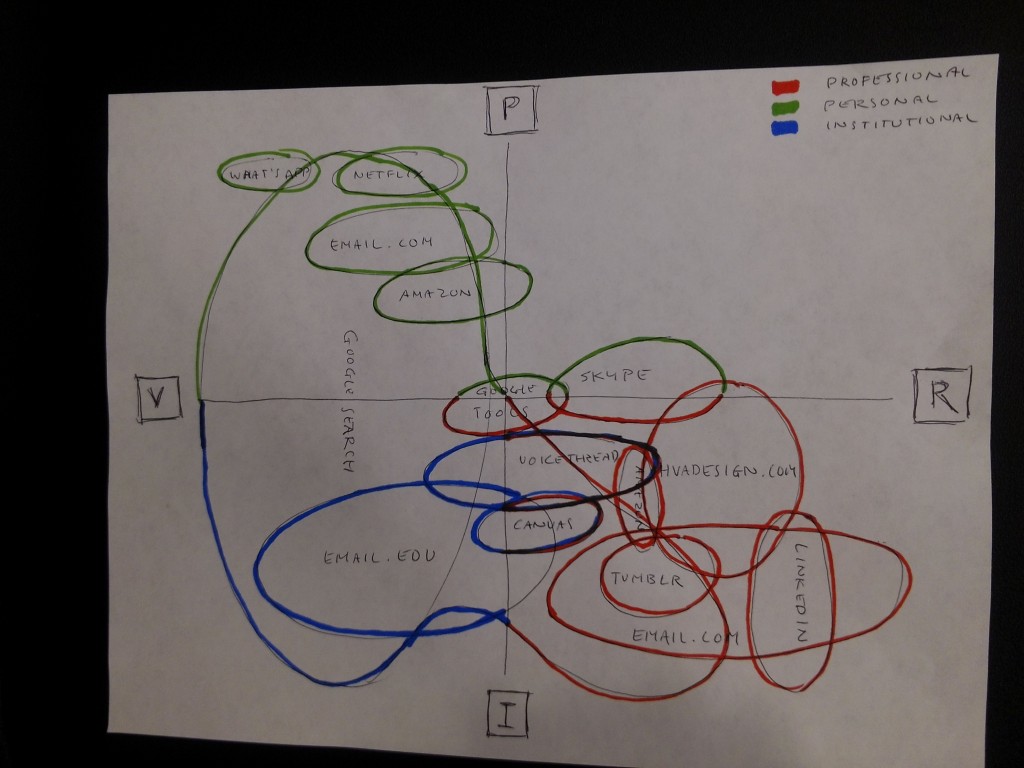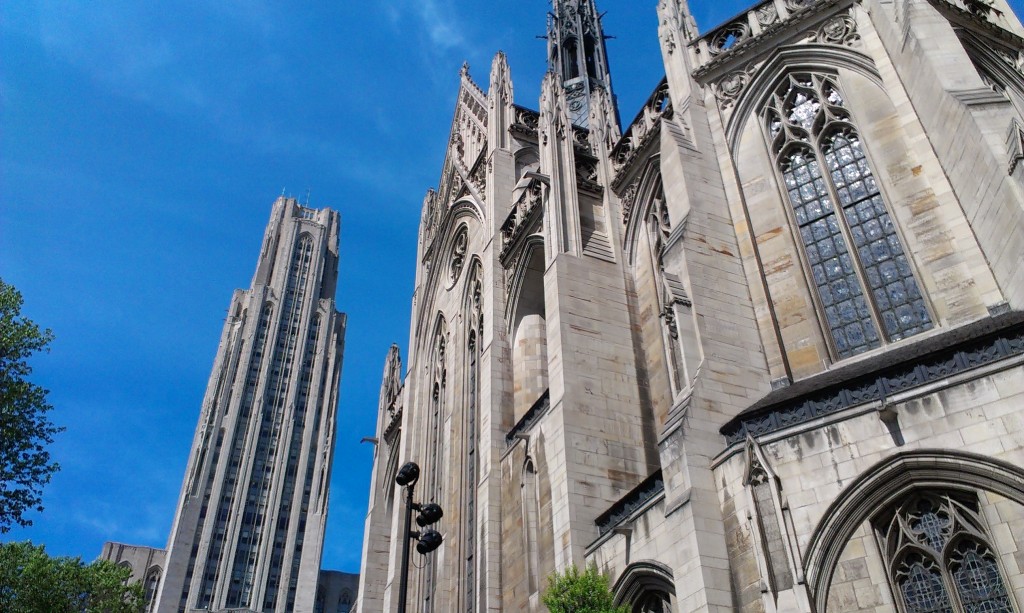|
Listen to this post
Getting your Trinity Audio player ready...
|
I have just completed a week away that contained two different Visitors and Residents workshops. The first I conducted with Dave White at Parsons, the New School for Design, at the invitation of Cynthia Lawson Jaramillo, with a group of Parsons faculty. The second was a two-day event at the invitation of Keith Webster at Carnegie Mellon, with a group that included librarians and library staff from CMU as well as the University of Pittsburgh, and Dave and I were joined by Lynn Connaway to run the workshop. Dave blogged his views on the different workshops here.
I am struck by how little the basic mapping format has changed since we started doing these workshops in conference settings, as a way of getting people to think about the V&R concept without lecturing.
When we have people map themselves, the range of practice remains striking. We get “sparse” maps
and we get “filled in” maps.
We get people whose Resident practice is largely in their personal lives,
and others who primarily engage in the Resident spaces of the web (such as Twitter, Facebook, or Google+) because of what they need to do in their professional lives, or for their volunteering obligations, or as a part of their artistic practice.
The point we have to make over and over again at these events is that no mode of practice is inherently better than the other. I can see the tension run out of people when we tell them that no one is going to be judged for their maps. The intent of our work, and the workshop, is not to identify those who are “More Resident” so as to claim that their practices are Best and then send their largely Visitor-centric colleagues over to Learn How To Do the Web Better.
Because the V&R workshop is not about Doing the Web Better. The workshop is a way of visualizing practice, and in particular about making clear all the different ways in which the Web is a Place, a location for people to meet and interact and learn and leave and come back to. A place where, as with any place that has people in it, individuals can do the social work that results in relationships, where intimacy can flourish even in the absence of face to face interaction.
Engaging with digital places is not a substitute for engagement face to face, rather it proliferates the possible locations where connections can be made.
In libraries, in higher education generally, the work of institutions is embedded in relationships. Students, faculty, and staff rely on each other (or don’t) because of webs of trust and credibility that are not just about institutional authority ( they are seldom just about that) but because of the meaningful connection that grow when people interact with each other in common places like: Student Unions, Library Buildings, Cafes, Classrooms. But also: Twitter, Facebook, YikYak (!) and Instagram. The Digital can be (among other things) a tool, or a resource full of content, but its existence as a Place is what can be hard to see, at the same time it is so terrifically important to grasp.
We seldom have time to be reflective about our own practices, what they are as well as what they mean. In offering the workshop format as an open resource, and also in coming in to run the workshops ourselves, as we did this last week at Parsons and at CMU/Pitt, the Visitors and Residents team is helping provide space for such reflection to take place. Further thoughts from Lawrie Phipps about where we can take the V&R framework from here can be found here.
